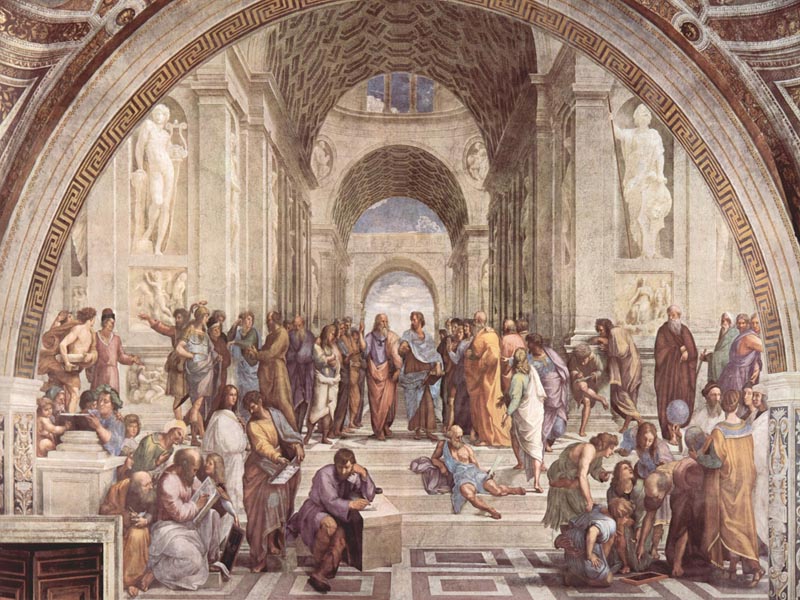Renaissance is a remarkable period in human history where for the first time, we turned towards ourselves for conscience and decision-making rather than being dependent on religion.
What was the ‘Renaissance’?
The French word ‘Renaissance’ means ‘rebirth’. From about 1350 to 1550 a lot of scholars and artists, such as the genius Leonardo da Vinci, recaptured the knowledge of ancient times, which was forgotten at the time of the start of the medieval age. With the invention of the printing press, ideas such as the demand for freedom and the dignity of humans spread very quickly. Sailors discovered new trade routes, and Martin Luther initiated a reformation of the Christian church, which had far-reaching consequences. The so-called Modern Age dawned and it brought the Thirty-year War and the advance of the Ottomans to the middle of Europe.
Why was Leonardo da Vinci a genius?
Genius is the name given to those people who accomplish wonderful achievements. This is exactly what the Italian sculptor, painter, and scientist Leonardo da Vinci (1452-1519) did. His painting technique had a lively effect on the people and influenced the later painters. He dissected the dead and was the first person to draw internal organs of the human body. He even studied technology and physics and drew diagrams of machines and means of transportation, which became a reality many years later after the invention of the steam engine.
What did Martin Luther do?
In 1517, the monk Martin Luther (1483- 1546) publicly criticized that the teachings spread by the Christian church often deviated from those written in the Bible. If- as the Bible said- all Christians were equal, then neither the rich nor the Pope be the head of the church. He demanded a reform, a change of the church, and thus opposed the Pope directly. The Pope excluded him from the church and the King declared Luther an outlaw. At his hiding place, the monk translated the Bible into German for the first time and thus established a new religious orientation.
Who were the Ottomans?
The Ottomans were a dynasty of rulers, who ruled in Asia Minor, present-day Turkey, for many centuries. In 1299 they started capturing the East Roman empire and finally conquered it fully by 1453. Constantinople, present-day Istanbul, became the capital city of the Muslim Ottoman kingdom. It ruled over the trade routes to Asia, which made it very risky for the Europeans. For this reason, the European rulers supported the sailors to find new trade routes. At the same time, the Ottoman rulers moved far in the West and besieged Vienna in 1683, but they were defeated. Still, Europe and the Ottomans waged the ‘Turkish Wars’ till the 19th century. The Ottomans lost their power only after that.
What were the consequences of the Reformation?
The new evangelical belief changed the entire order in the state. Farmers protested against their landlords in 1524, which, however, failed. German princes and Dutch nobles protested against the catholic king after converting to the new belief. Although after the Religious Peace of Augsburg in 1555 each prince was set free to select the belief for his estate, there was a movement against the reformation, that is against the new belief. This counter-reformation led to the thirty-year war, in which more people were killed than in any other later war.
What was the Thirty-year War?
In the Thirty-year War (1618-1648), the followers of the evangelical belief, the Protestants, fought with the Catholics in the beginning. The war started when the Bohemian king withdrew the religious freedom promised earlier to the Protestant subjects in 1618. Without further ado the Protestant nobles deposed him, whereupon the Catholics sent a huge army. Soon the war spread to the entire kingdom, at that time, the ‘Holy Roman Empire, and weakened it further. This was used by some neighboring countries to curtail the power of the German emperor. The war ended in 1648 with the ‘Westphalia Peace’.
| Did you know that…
● The world famous painting Mona Lisa was painted by Leonardo da Vinci? ● By 1510 clocks were so small that they could fit in the trouser pocket. ● ‘Vogelfrei’ does not mean one is free as a bird. It means outlaw and outlawed people are no longer protected by the law and could be robbed or killed with impunity. They were exposed ‘freely to the attacks by birds’. ● The church prohibited the cutting of dead bodies till the 16th century. Therefore, the doctors of the time knew about the inside of the human body only from textbooks that were thousands of years old, such as the one written by Galenus. ● The term ‘Protestant’ can be traced back to the protest by Martin Luther against the Catholic Church.
|
Stay with
Prerna




